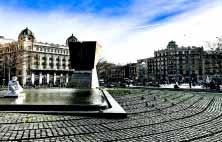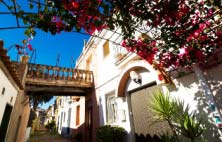Hospital de Sant Pau (Church)
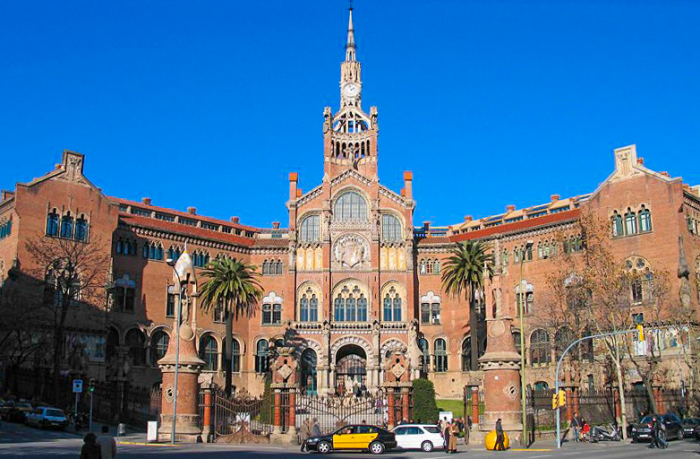
The Hospital of Sant Pau (Full name: Hospital de la Santa Creu i Sant Pau) has always been one of the main medical centres in Barcelona, and yet has also been recognized for its beauty and art. In 1997 it was declared a World Heritage Site by UNESCO, therefore it's in your best interest to visit this building if you're in Barcelona, it's completely worth it.
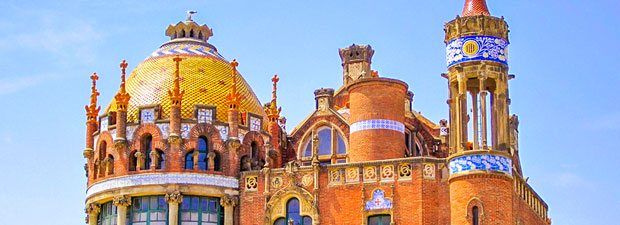
If you come to visit the capital of Catalonia, we will help you to find the best holiday apartments in Barcelona. We offer apartments of different types, renovated and well furnished in all areas of Barcelona!
A history of administrative disputes
The Hospital of Sant Pau dates back 1401 with the primary objective being to reduce the number of hospitals in the Barcelona region, formed up of 6 other hospitals. It was managed by a prior from a religious order. Throughout its history, the civil and religious powers have always fought over its management, increasing further as it eventually became the main hospital of Catalonia in the 19th century. It was taken over by the local government in 1978 and has since been a university hospital used to teach students.
Excursions in Barcelona
To make the most of Barcelona and fill your trip with unforgettable experiences and emotions, we offer you the excursions through the Catalan capital organized by our friends - the GetYourGuide team. Choose your excursion and fall in love with Barcelona:
A work of art between father and son
With the arrival of the 20th century, it was necessary to build a new building for the growing population. Therefore a new project was funded by the banker Pau Gil, which is why the hospital today is known to have Sant Pau in the name (it's not directly named after him, just the patron saint paul in his honour).
The person responsible for the project was Lluís Domènech i Montaner, also famous for his work on the modernist Palau de la Musica. Between 1902 and 1913, he built three modernist buildings, whose unique style made them stand out in the area.
History repeated itself and yet more administrative disputes arrived, eventually finance ran out and Lluis left the project. That's not the end however, as his son took over in 1920, who erected six more buildings on the site, as well as adjoining streets, parks, fountains, and an area to grow medicinal plants to the hospital. He even faced his buildings toward the sea so that patients would feel a cool sea breeze.
The Hospital today
If you're visiting the hospital today, then you'll find that the modernist structures by the Domènechs are no longer used as hospitals, but have undergone renovation for use as cultural spaces, including tours. There have been other buildings built more recently like Fundacio Puigvert, which treats patients with urological, androginal, and renal problems (more information about that specialist clinic available here).

Style
It is principally a modernist style site, however it implements styles from other eras of architecture. It emphasizes the use of bricks, something mainly found in Mudejar architecture, a style that largely inspired Lluis Domènech. The site consists of the main building and 27 smaller wards, all connected via underground tunnels. The main structure contains a library and a church, both of artistic significance. Each of the wards has its own particular style, with the buildings increasing in size the further they move from the main building.
Other attractions in Horta-Guinardó
Read more about Horta-Guinardó ➯
Do you like this post?
Click here!

Share your thoughts
Apartments in Barcelona
-
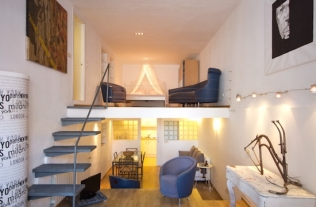 €2100
Sant Pau II 6 | | 75m² Monthly rental for up to 6 people with free internet close to Sagrada Familia, Barcelona
€2100
Sant Pau II 6 | | 75m² Monthly rental for up to 6 people with free internet close to Sagrada Familia, Barcelona

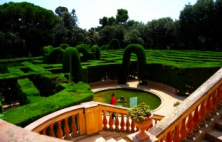 Parc Laberint d'Horta
The oldest and most romantic garden park in Barcelona will leave you lost... for words...
Parc Laberint d'Horta
The oldest and most romantic garden park in Barcelona will leave you lost... for words...







